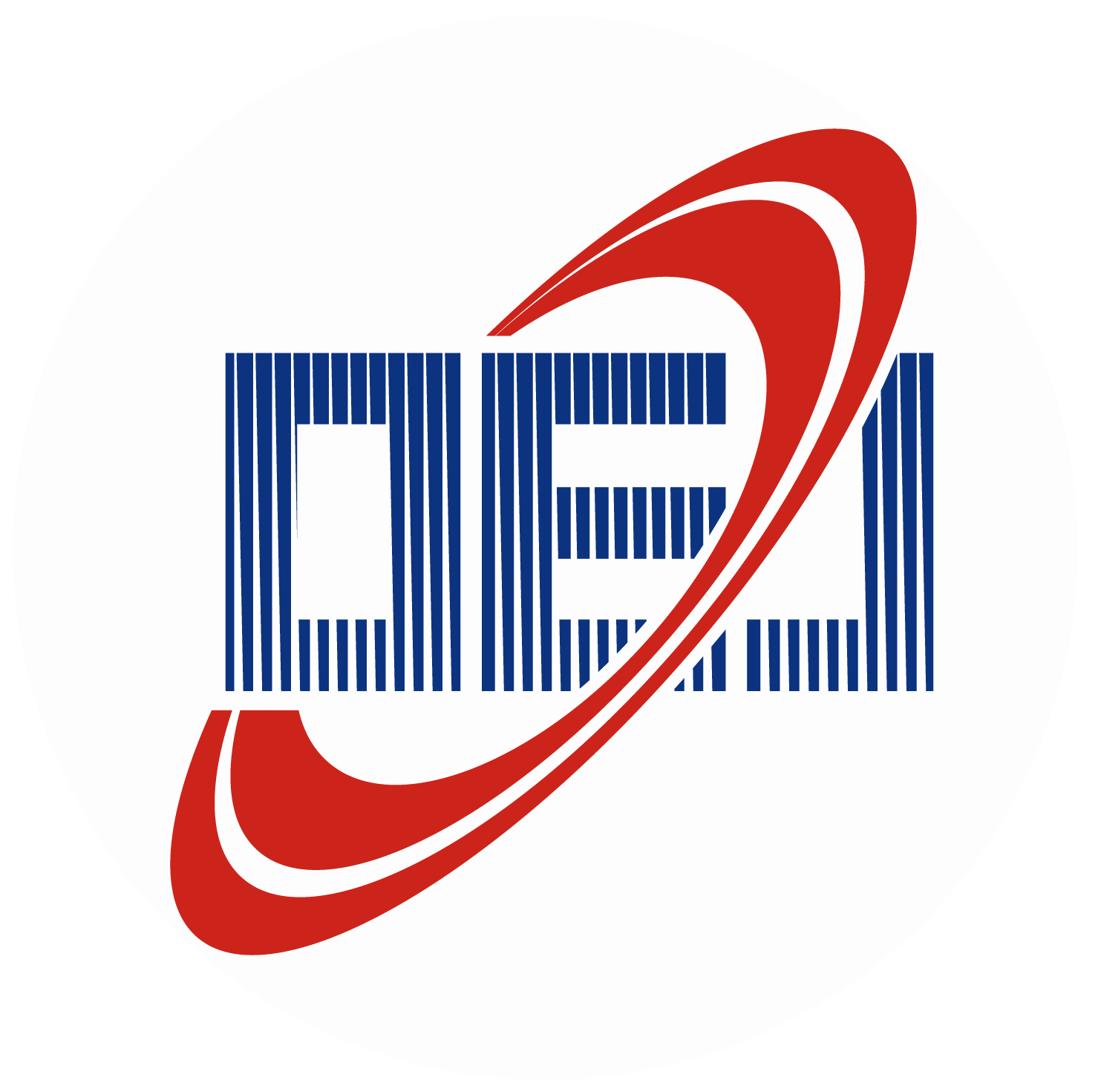Generation and detection of a tightly focused uniform optical bubble based on single-beam vector field modulation
-
摘要
三维光泡,即紧聚焦三维中空暗场光斑分布,在光学操控以及激光加工等领域中具有重要的应用价值。在已报道的工作中,三维光泡一般采用多光束干涉叠加的方式来产生,光路复杂,不利于系统集成应用,且能量利用率低。利用单光束矢量光场调控技术,产生高强度均匀性紧聚焦三维光泡,并利用探测光偏振转换技术实现对三维光泡的探测。通过调节旋向偏振入射光与0/π二元相位调制的径向偏振入射光的能量比,在实验上实现边缘强度与中心暗斑强度比值大于10:1、边缘强度均匀度接近90%的三维光泡,为双光束超分辨激光加工与光存储、粒子操控等领域提供实用的技术途径。
Abstract
Optical bubble, characterized by a tightly focused three-dimensional dark-field intensity distribution, exhibits significant application value in fields such as optical manipulation and laser processing. In previously reported results, an optical bubble is typically generated through multi-beam interference and superposition, which involves complex optical setups and is not conducive to system integration and practical applications, and has low energy utilization efficiency. In this study, we utilize single-beam vector field modulation technology to generate a tightly focused optical bubble with high intensity uniformity. Furthermore, we achieve the detection of this hollow bubble through polarization conversion of the probe light. By adjusting the energy ratio between azimuthally polarized incident beam and radially polarized incident beam modulated by a 0/π binary phase, we experimentally realize an optical bubble with an edge-to-center dark spot intensity ratio exceeding 10:1 and edge intensity uniformity approaching 90%. This work provides a feasible technical approach for applications in dual-beam super-resolution laser processing, optical data storage, and particle manipulation.
-
Overview
Overview: Optical bubble, characterized by a tightly focused three-dimensional dark-field spot distribution, exhibits significant application values in fields such as optical manipulation and laser processing. Since 2000, research on the focused field distribution of optical bubbles has gradually gained attention. Arlt et al. generated an optical bubble in the focal region through the coherent superposition of two different Laguerre-Gaussian beam modes. Zhan et al. produced a tightly focused optical bubble using cylindrical vector beams combined with binary diffractive optical elements. Kozawa et al. achieved an optical bubble via coherent superposition of double annular radially polarized beams. However, the poor intensity uniformity at the edges of these generated bubbles limits their practical applicability. Bokor et al. utilized a Laguerre-Gaussian radially polarized beam for 4π focusing, generating an optical bubble with high intensity uniformity in the focal region. However, the counter-propagating focusing scheme in 4π focusing requires extremely high experimental alignment precision, making it challenging to implement in practice. Subsequently, this research group achieved the generation of an optical bubble with high intensity uniformity under conventional unidirectional focusing conditions by adjusting the energy ratio between an azimuthally polarized incident beam and a radially polarized incident beam modulated by a 0/π binary phase. Nevertheless, current experimental realizations of optical bubbles rely on multi-beam synthesis, which imposes stringent requirements on the experimental setup, particularly the multi-pulse beam synthesis system.
To address this issue, we utilize single-beam vector field modulation technology to generate an optical bubble with high intensity uniformity in a simplified experimental system. Furthermore, polarization conversion of the probe light enables the detection of individual polarization components within the focused field, facilitating the reconstruction of the three-dimensional morphology distribution of the optical bubble. By optimizing the energy ratio between the azimuthally polarized incident beam and the radially polarized incident beam modulated by a 0/π binary phase, we experimentally demonstrate an optical bubble with an edge-to-center dark spot intensity ratio exceeding 10:1 and edge intensity uniformity approaching 90%. Highly uniform optical bubble significantly enhances particle manipulation by enabling precise trapping of particles, thereby improving experimental controllability and repeatability. In terms of processing accuracy, it mitigates issues such as non-uniform machining depth and edge burrs, ultimately increasing production yield in material processing applications. Compared to traditional multi-beam synthesis methods, this technology markedly reduces system complexity while doubling optical energy utilization efficiency, providing a more practical technical approach for applications in dual-beam super-resolution laser processing, optical data storage, and particle manipulation.
-

-
图 1 XY焦平面和包含光轴的XZ平面内的光场强度归一化分布和三维光泡的光场强度归一化曲线理论结果。(a)旋向偏振入射光紧聚焦生成中空管状光场;(b) 0/π二元相位调制的径向偏振入射光紧聚焦光场;(c)在最佳强度均匀度时,二者叠加生成的紧聚焦三维光泡;(d)不同能量比下(RP/AP)三维光泡均匀度变化曲线图;(e)三维光泡沿x方向、z方向和c方向的光场强度归一化曲线
Figure 1. Normalized intensity distributions of optical field intensity in XY focal plane and XZ plane containing the optical axis, as well as theoretical results of normalized intensity curves of three-dimensional optical bubble. (a) Tightly focused hollow tubular optical field generated by azimuthally polarized incident beam; (b) Tightly focused optical field generated by radially polarized incident beam with 0/π binary phase modulation; (c) Tightly focused three-dimensional optical bubble generated by superposition of two under optimal intensity uniformity;(d) Variation curve of three-dimensional optical bubble uniformity under different energy ratios (RP/AP); (e) Normalized intensity curves of three-dimensional optical bubble along x-direction, z-direction, and c-direction
图 3 XY焦平面和包含光轴的XZ平面内的光场强度归一化分布和三维光泡的光场强度归一化曲线实验结果。(a)旋向偏振入射光紧聚焦生成中空管状光场;(b) 0/π二元相位调制的径向偏振入射光紧聚焦光场;(c)二者叠加生成的紧聚焦三维光泡;三维光泡光场强度沿(d) x方向、(e) z方向和(f) c方向的归一化曲线
Figure 3. Experimental results of normalized intensity distributions of optical field in XY focal plane and XZ plane containing optical axis, as well as normalized intensity curves of three-dimensional optical bubble. (a) Tightly focused hollow tubular optical field generated by azimuthally polarized incident beam; (b) Tightly focused optical field generated by radially polarized incident beam with 0/π binary phase modulation;(c) Tightly focused optical bubble generated by the superposition of the two; Normalized intensity curves of three-dimensional optical bubble along (d) x-direction, (e) z-direction, and (f) c-direction
表 1 三维光泡产生方法及效果对比
Table 1. Comparison of three-dimensional optical bubble generation methods and effects
编号 文章信息 方法 原理图 聚焦光强分布(XZ面) 均匀度 存在的问题 1 J. Arlt, et al.,
Opt. Lett.
25, 191 (2000).两种不同模式的
拉盖尔-高斯光束
紧聚焦

低于
50%强度分布均匀
性较差2 W.Chen, et al.,
Opt.Commun.
265, 411 (2006).柱矢量光束并结
合二元衍射光学
元件

低于
50%强度分布均匀
性较差3 Y.Kozawa, et al.,
Opt. Lett.
31, 820 (2006).双环形径向偏振
光紧聚焦

低于
50%强度分布均匀
性较差4 N.Bokor, et al.,
Opt. Lett.
31, 149 (2006).两个反向传播的
径向偏振 LG 光
束 4π 聚焦

接近
90%4π 聚焦实验
较难实现5 N.Bokor, et al.,
Opt.Commun.
279, 229 (2007).旋向偏振光与 0/π
二元相位调制的径
向偏振光叠加合成
聚焦

接近
90%实验上利用多
光束合成实现,
能量利用率较低 -
参考文献
[1] Zhan Q W, Leger J R. Focus shaping using cylindrical vector beams[J]. Opt Express, 2002, 10(7): 324−331. doi: 10.1364/OE.10.000324
[2] Moh K J, Yuan X C, Bu J, et al. Generating radial or azimuthal polarization by axial sampling of circularly polarized vortex beams[J]. Appl Opt, 2007, 46(30): 7544−7551. doi: 10.1364/AO.46.007544
[3] Wang X L, Ding J P, Ni W J, et al. Generation of arbitrary vector beams with a spatial light modulator and a common path interferometric arrangement[J]. Opt Lett, 2007, 32(24): 3549−3551. doi: 10.1364/OL.32.003549
[4] Ehmke T, Nitzsche T H, Knebl A, et al. Molecular orientation sensitive second harmonic microscopy by radially and azimuthally polarized light[J]. Biomed Opt Express, 2014, 5(7): 2231−2246. doi: 10.1364/BOE.5.002231
[5] 郁步昭, 王吉明, 吴彤, 等. 基于矢量光场的TeO2晶体旋光特性研究[J]. 应用光学, 2021, 42(6): 963−968. doi: 10.5768/JAO202142.0601003
Yu B Z, Wang J M, Wu T, et al. Optical rotation properties of TeO2 crystal based on vector light field[J]. J Appl Opt, 2021, 42(6): 963−968. doi: 10.5768/JAO202142.0601003
[6] Biss D P, Youngworth K S, Brown T G. Dark-field imaging with cylindrical-vector beams[J]. Appl Opt, 2006, 45(3): 470−479. doi: 10.1364/AO.45.000470
[7] Galiani S, Harke B, Vicidomini G, et al. Strategies to maximize the performance of a STED microscope[J]. Opt Express, 2012, 20(7): 7362−7374. doi: 10.1364/OE.20.007362
[8] Li C K, Li Y Z, Zhan Z Y, et al. Sub-diffraction dark spot localization microscopy[J]. Photonics Res, 2021, 9(8): 1455−1461. doi: 10.1364/PRJ.429933
[9] Fischer J, Wegener M. Three‐dimensional optical laser lithography beyond the diffraction limit[J]. Laser Photonics Rev, 2013, 7(1): 22−44. doi: 10.1002/lpor.201100046
[10] Wollhofen R, Katzmann J, Hrelescu C, et al. 120 nm resolution and 55 nm structure size in STED-lithography[J]. Opt Express, 2013, 21(9): 10831−10840. doi: 10.1364/OE.21.010831
[11] Wollhofen R, Buchegger B, Eder C, et al. Functional photoresists for sub-diffraction stimulated emission depletion lithography[J]. Opt Mater Express, 2017, 7(7): 2538−2559. doi: 10.1364/OME.7.002538
[12] He X L, Li T L, Zhang J, et al. STED direct laser writing of 45 nm width nanowire[J]. Micromachines, 2019, 10(11): 726. doi: 10.3390/mi10110726
[13] Qiu Y W, Ding C L, Zhan G Y, et al. Peripheral-photoinhibition-based direct laser writing with isotropic 30 nm feature size using a pseudo 3D hollow focus[J]. Opt Laser Technol, 2024, 170: 110011. doi: 10.1016/j.optlastec.2023.110011
[14] Liu X W, Xia X L, Yao Z F, et al. Theoretical and practical guide for an axial superresolved focus via Gouy phase steering[J]. Photonics Res, 2022, 10(11): 2502−2512. doi: 10.1364/PRJ.467976
[15] 谢辰, 刘彤炎. 矢量涡旋光场在激光微纳加工中的应用[J]. 光电工程, 2024, 51(8): 240089. doi: 10.12086/oee.2024.240089
Xie C, Liu T Y. Applications of vector vortex beams in laser micro-/nanomachining[J]. Opto-Electron Eng, 2024, 51(8): 240089. doi: 10.12086/oee.2024.240089
[16] Zijlstra P, Chon J W M, Gu M. Five-dimensional optical recording mediated by surface plasmons in gold nanorods[J]. Nature, 2009, 459(7245): 410−413. doi: 10.1038/nature08053
[17] Ouyang X, Xu Y, Xian M C, et al. Synthetic helical dichroism for six-dimensional optical orbital angular momentum multiplexing[J]. Nat Photonics, 2021, 15(12): 901−907. doi: 10.1038/s41566-021-00880-1
[18] Wang Z, Zhang B, Tan D Z, et al. Ostensibly perpetual optical data storage in glass with ultra-high stability and tailored photoluminescence[J]. Opto-Electron. Adv., 2023, 6(1): 220008. doi: 10.29026/oea.2023.220008
[19] Ashkin A, Dziedzic J M, Bjorkholm J E, et al. Observation of a single-beam gradient force optical trap for dielectric particles[J]. Opt lett, 1986, 11(5): 288−290. doi: 10.1364/OL.11.000288
[20] Ren Y T, Chen Q, He M J, et al. Plasmonic optical tweezers for particle manipulation: principles, methods, and applications[J]. ACS Nano, 2021, 15(4): 6105−6128. doi: 10.1021/acsnano.1c00466
[21] Arlt J, Padgett M J. Generation of a beam with a dark focus surrounded by regions of higher intensity: the optical bottle beam[J]. Opt Lett, 2000, 25(4): 191−193. doi: 10.1364/OL.25.000191
[22] Chen W B, Zhan Q W. Three-dimensional focus shaping with cylindrical vector beams[J]. Opt Commun, 2006, 265(2): 411−417. doi: 10.1016/j.optcom.2006.04.066
[23] Kozawa Y, Sato S. Focusing property of a double-ring-shaped radially polarized beam[J]. Opt Lett, 2006, 31(6): 820−822. doi: 10.1364/OL.31.000820
[24] Bokor N, Davidson N. Generation of a hollow dark spherical spot by 4π focusing of a radially polarized Laguerre-Gaussian beam[J]. Opt Lett, 2006, 31(2): 149−151. doi: 10.1364/OL.31.000149
[25] Bokor N, Davidson N. A three dimensional dark focal spot uniformly surrounded by light[J]. Opt Commun, 2007, 279(2): 229−234. doi: 10.1016/j.optcom.2007.07.014
[26] 夏小兰, 曾宪智, 宋世超, 等. 基于柱矢量光调控的纵向超分辨率准球形多焦点阵列[J]. 光电工程, 2022, 49(11): 220109. doi: 10.12086/oee.2022.220109
Xia X L, Zeng X Z, Song S C, et al. Longitudinal super-resolution spherical multi-focus array based on column vector light modulation[J]. Opto-Electron Eng, 2022, 49(11): 220109. doi: 10.12086/oee.2022.220109
[27] Richards B, Wolf E. Electromagnetic diffraction in optical systems, II. Structure of the image field in an aplanatic system[J]. Proc R Soc Lond A Math Phys Sci, 1959, 253(1274): 358−379. doi: 10.1098/rspa.1959.0200
[28] Youngworth K S, Brown T G. Focusing of high numerical aperture cylindrical-vector beams[J]. Opt Express, 2000, 7(2): 77−87. doi: 10.1364/OE.7.000077
[29] 王思聪, 李向平. 紧聚焦轴对称矢量光场波前调控及应用[J]. 中国光学, 2016, 9(2): 185−202. doi: 10.3788/co.20160902.0185
Wang S C, Li X P. Wavefront manipulation of tightly focused cylindrical vector beams and its applications[J]. Chin Opt, 2016, 9(2): 185−202. doi: 10.3788/co.20160902.0185
[30] 欧阳旭, 徐毅, 冼铭聪, 等. 基于无序金纳米棒编码的多维光信息存储[J]. 光电工程, 2019, 46(3): 180584. doi: 10.12086/oee.2019.180584
Ouyang X, Xu Y, Xian M C, et al. Encoding disorder gold nanorods for multi-dimensional optical data storage[J]. Opto-Electron Eng, 2019, 46(3): 180584. doi: 10.12086/oee.2019.180584
[31] Li C H, Ouyang X, Sun J L, et al. Transverse scattering from nanodimers tunable with generalized cylindrical vector beams[J]. Laser Photonics Rev, 2023, 17(6): 2200867. doi: 10.1002/lpor.202200867
[32] Ouyang X, Li C H, Cao Y Y, et al. Localized spontaneous chiroptical response in disordered plasmonic nanoaggregates[J]. ACS Photonics, 2023, 10(7): 2407−2413. doi: 10.1021/acsphotonics.2c01736
[33] Xie X S, Chen Y Z, Yang K, et al. Harnessing the point-spread function for high-resolution far-field optical microscopy[J]. Phys Rev Lett, 2014, 113(26): 263901. doi: 10.1103/PhysRevLett.113.263901
-
访问统计


 E-mail Alert
E-mail Alert RSS
RSS

 下载:
下载:






